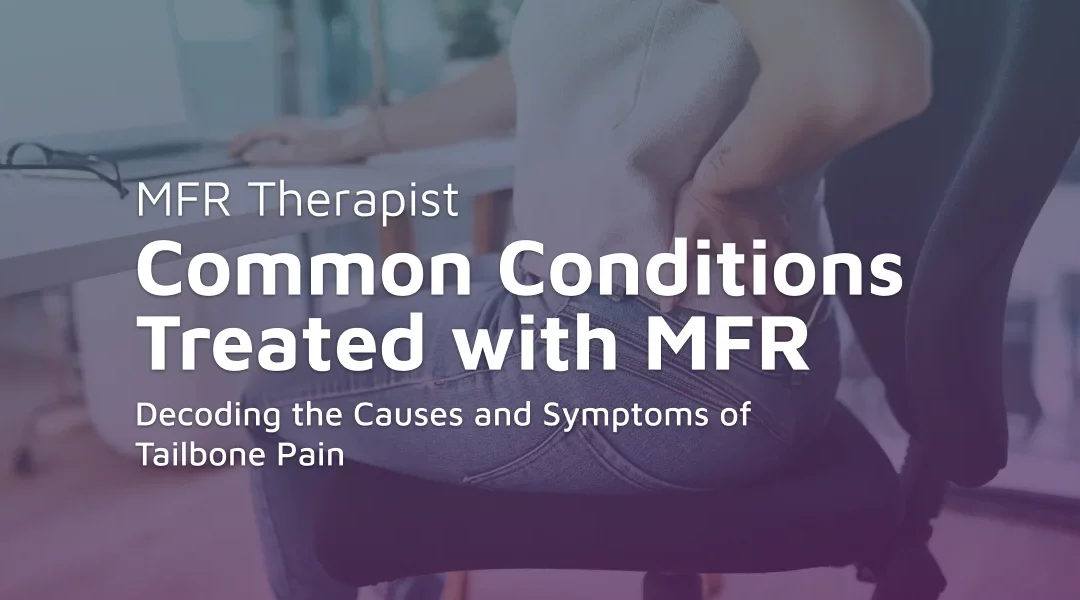In terms of age demographics, coccydynia is not confined to one particular age group but could be more frequent in contexts associated with bodily changes, such as pregnancy in women. Additionally, older adults might be at a heightened risk for tailbone pain due to age-related degenerative processes affecting the spine and coccyx.
Injury-induced
Tailbone pain is often the result of an injury to the coccyx or the surrounding tissues. Physical trauma is the most common cause of this type of pain, which can originate from a hard fall, an unexpected blow to the area, or the process of childbirth. During delivery, the coccyx can sustain significant trauma due to pressure from the baby’s head, potentially causing persistent discomfort long after the birthing process. In exceptional cases, a severe fall might not only bruise but also dislocate the joint between the coccyx and the sacrum, a condition that requires prompt professional intervention.
Lifestyle
Certain lifestyle factors can also contribute to tailbone pain or exacerbate existing discomfort. For example, prolonged sitting, especially on hard surfaces or with improper posture, can lead to coccydynia. Additionally, repetitive strain from activities such as horseback riding, cycling, or even sitting for extended periods while driving can cause tailbone pain over time. Obesity can also play a role, as carrying excess weight puts extra pressure on the coccyx when sitting down. Conversely, being too thin can also lead to tailbone pain, as a lack of adequate padding in the buttock area can cause the tailbone to rub against nearby tissues, leading to discomfort.
Medical conditions
Various medical conditions can lead to tailbone pain, each with distinct causes and implications. Age-related changes, such as the degeneration of cartilage within the spine, can cause vertebrae to rub together and generate significant discomfort. This is often associated with conditions like osteoarthritis, which can exert additional pressure on the coccyx. Another potential cause of tailbone pain is bone cancer in the coccyx, which can manifest as localized or spreading pain. Additionally, pelvic floor dysfunction is a disorder where damage or weakness in the pelvic floor muscles causes instability or pain in the coccygeal region.
Idiopathic tailbone pain
When tailbone pain manifests without a discernible cause, it is labeled as idiopathic tailbone pain. Patients may experience this discomfort abruptly or gradually, yet it remains a conundrum for healthcare providers due to its enigmatic origins. An individual who suffers from tailbone pain in the absence of a clear-cut incident or trauma could be contending with an underlying issue that has yet to be identified. It is essential to consult with a medical professional if one faces persistent tailbone pain that does not subside after a couple of weeks, if the pain lessens but returns intermittently, or if attempts at home remedies result in escalating discomfort.
Physical symptoms
Symptoms associated with tailbone pain can present as a spectrum of discomfort, ranging from a persistent, dull ache to acute, stabbing pain. It’s not uncommon for this pain to radiate, extending from the tailbone to adjacent regions such as the lower back, hips, or even down to the legs. In some instances, the reverse can occur, with pain originating elsewhere and converging on the tailbone area. Beyond pain, individuals might also experience sensations of numbness or tingling, often referred to as ‘paresthesia,’ in the lower back and legs. These symptoms signify a disruption of nerve function, which may require targeted therapeutic intervention.
Pain severity and duration
The severity and duration of tailbone pain can greatly vary. In some cases, the pain might be mild and short-lived, whereas in others, it could be severe and persistent, lasting for several months. Certain activities, such as sitting upright or standing for long periods, can exacerbate the pain. Pain severity can also fluctuate, with individuals experiencing periods of increased discomfort followed by periods of relief. It’s important to note that the duration of pain can depend on the underlying cause, with conditions like fractures requiring longer healing times.
Impact on daily activities
Tailbone pain can significantly impact an individual’s daily activities. The discomfort can make sitting for long periods or standing for extended periods particularly challenging, potentially disrupting work, especially for those in occupations requiring such postures. Furthermore, tailbone pain may intrude on restorative sleep, compounding fatigue and discomfort. Exercise, a necessary component of a healthy lifestyle, might become a painful undertaking due to the sensitivity in the tailbone area.
When to seek medical attention
Although some tailbone discomfort might be alleviated with at-home strategies, there are instances where medical attention is warranted. Pain that is significant, persistent, or interferes with daily life warrants a consultation with a healthcare professional. It is vital to seek guidance if pain does not subside after self-care efforts. In the event of severe injury, such as from a fall or other accidents, immediate medical attention is imperative. This is particularly true if the injury is accompanied by loss of sensation, significant bruising, alterations in movement or coordination, or tingling in the local area.
Physical therapy
Physical therapy is a cornerstone in the treatment and management of tailbone pain. By engaging in tailored exercises prescribed by a therapist, patients can strengthen the musculature surrounding the tailbone, leading to improved support and decreased pain. Furthermore, therapists place a high emphasis on educating patients about proper posture and ergonomic adaptations. These aspects are especially pertinent when tailbone pain is related to factors such as prolonged sitting or habitual poor posture. The combination of muscle strengthening and postural education provided by physical therapy is vital for lasting relief and management of tailbone discomfort.
Home remedies and lifestyle modifications
When dealing with tailbone pain, incorporating home remedies and lifestyle changes can be an effective approach to managing discomfort. The use of over-the-counter painkillers, such as acetaminophen or NSAIDs like ibuprofen, can offer immediate relief for pain symptoms. As always, it’s advised to follow the recommended dosage and consider any personal health conditions that may affect the use of these medications.
The potential benefits of gentle stretching and light exercise should not be overlooked. Activities such as yoga and Pilates can enhance flexibility, strengthen the muscles supporting the coccyx, and alleviate tension that contributes to pain. These exercises promote blood flow and healing in the affected area, and can be especially beneficial when done consistently and with proper form.
Additionally, the role of proper sitting posture in preventing and managing tailbone pain is crucial. Utilizing cushions or wedges designed to relieve pressure from the coccyx, maintaining an ergonomic chair setup, and taking frequent breaks to stand and move around are all strategies that can minimize strain on the tailbone and help aid recovery.
Medical and surgical treatments
In situations where tailbone pain is persistent or severe, more advanced medical and surgical interventions may become necessary. For those with symptoms unresponsive to over-the-counter options, prescription pain medications might be the next step to manage intense discomfort. When inflammation contributes significantly to the pain, injectable steroids can be a viable treatment, offering relief by reducing the inflammation around the coccyx.
In the rare event that conservative treatments are unsuccessful, surgery may be considered. A coccygectomy is the surgical removal of part or all of the tailbone and is typically a last resort option. This procedure may be beneficial for those who have not found relief through other treatment modalities.
Myofascial release therapy
One of the fundamental approaches to treating tailbone pain is through Myofascial release (MFR) therapy. This specialized form of therapy targets the myofascial tissues of the body, which are the strong, web-like connective tissues that envelop all structures throughout the body, including those around the coccyx or tailbone. Release of tension in these myofascial tissues is critical, as they can often be the root cause of discomfort and restricted mobility in the region of the tailbone.
Incorporating MFR therapy can lead to significant alleviation of pain symptoms. By gently loosening the myofascial tissues, this technique allows for better movement and relief from the constriction that might be contributing to the tailbone pain. Moreover, when MFR is properly applied, it can aid in restoring the body’s equilibrium and enhance holistic wellness.
The field of tailbone pain management continues to evolve, with ongoing research and development leading to more effective treatments and improved patient outcomes. Certified MFR therapists stay at the forefront of these developments, incorporating the latest research and techniques into our treatment plans. By continually advancing our knowledge and skills, we ensure our patients receive the highest quality of care. With a clear focus on the future, we’re committed to revolutionizing the treatment of tailbone pain, one patient at a time. Find a certified MFR therapist near you today to get started.

